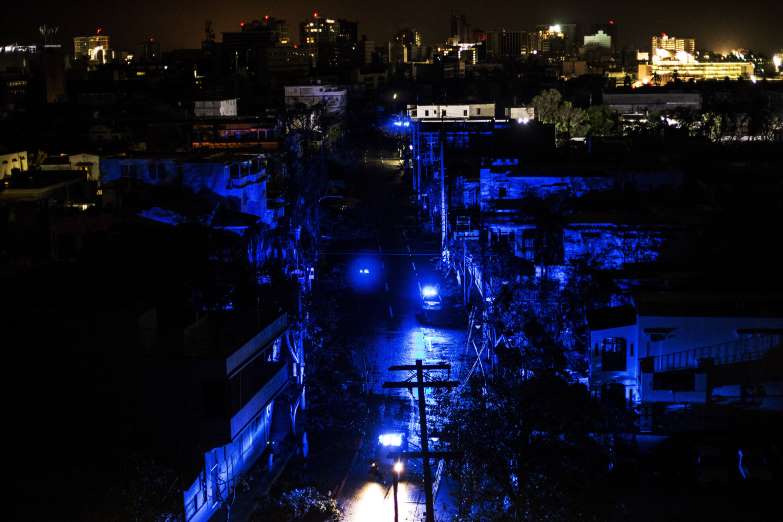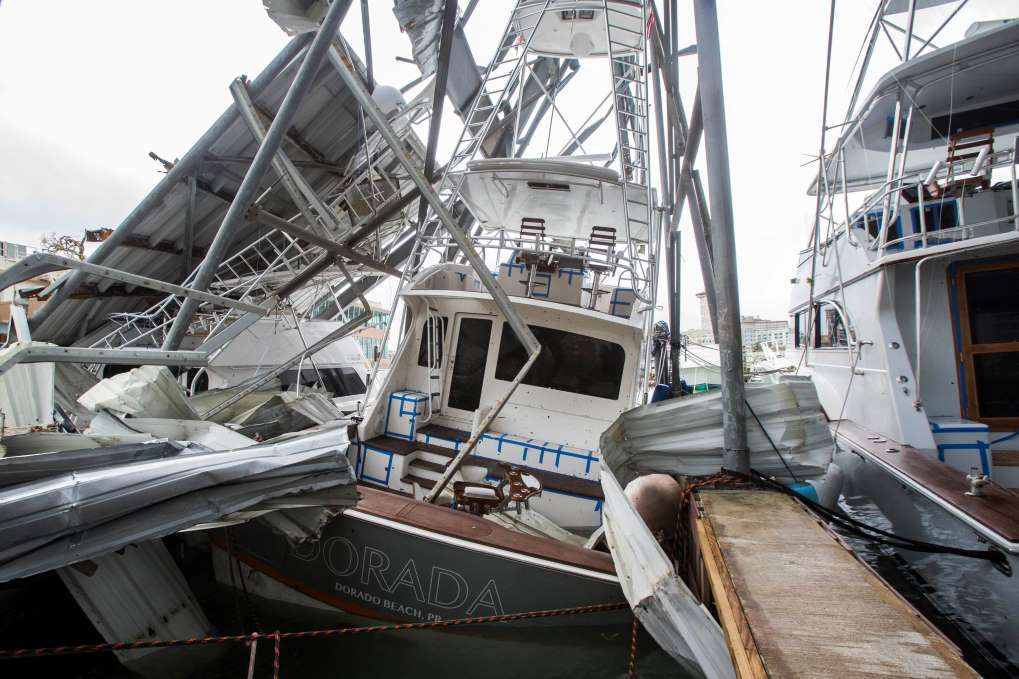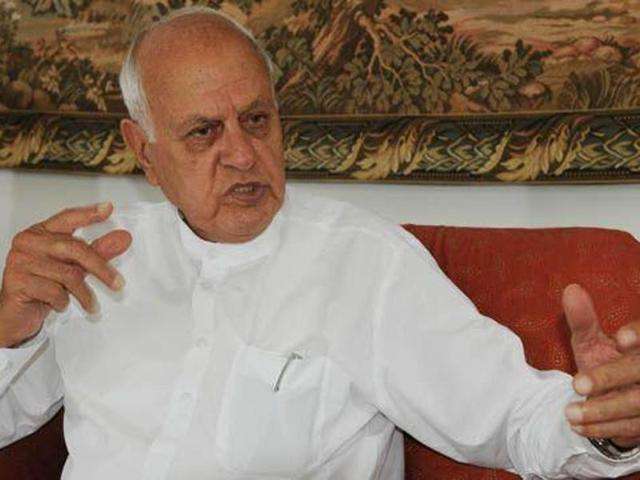September 21, 2017
SAN JUAN, Puerto Rico — After mauling Puerto Rico, Hurricane Maria delivered a weaker but still punishing blow Thursday to the Dominican Republic with winds near 115 mph and driving rains as the storm carved an arc of misery through the Caribbean.

September 21, 2017
SAN JUAN, Puerto Rico — After mauling Puerto Rico, Hurricane Maria delivered a weaker but still punishing blow Thursday to the Dominican Republic with winds near 115 mph and driving rains as the storm carved an arc of misery through the Caribbean.

San Juan is seen during a blackout after Hurricane Maria made landfall in Puerto Rico on Sept. 20
Maria — now a Category 3 hurricane — was expected to gather some fresh strength over open water before taking aim at the Turks and Caicos Islands, which were battered earlier this month by Hurricane Irma on its deadly path toward Florida.
But Maria may spare the U.S. mainland. The current National Hurricane Center forecasts show it veering sharply to the north and spinning up the Atlantic in the corridor between Bermuda and the Atlantic seaboard. But Maria’s ultimate path — either closer or farther from the U.S. coast — was still unclear and influenced by weather forces from the remnants of Hurricane Jose now off New England.
On Puerto Rico, the full extent of Maria’s fury was still being tallied. But it was clear that the rebuilding process will be massive after the island’s power grid and other services were effectively wiped away. Maria on Wednesday knocked out 100 percent of the island’s electrical grid, toppled cellphone towers and left many towns cut off by landslides or floods of muddy torrents.

SAN JUAN, PUERTO RICO — SEPTEMBER 20: Fishing boats with severe damage at Club Nautico in the San Juan Bay. Hurricane Maria passed through Puerto Rico leaving behind a path of destruction across the national territory. San Juan September 20, 2017.
“Definitely Puerto Rico — when we can get outside — we will find our island destroyed,” Abner Gómez, director of Puerto Rico’s emergency management agency, told reporters Wednesday as the storm engulfed the entire island. “The information we have received is not encouraging. It’s a system that has destroyed everything it has had in its path.”
It was the first Category 4 storm to strike the island directly since 1932. The devastation, too, is something the island has not seen in generations.
“Months and months and months and months are going to pass before we can recover from this,” Felix Delgado, the mayor of the northern coastal city of Catano, told the Associated Press.
First responders, including a fire-rescue team deployed from Fairfax, Va., had to ride out the storm for hours before emerging to help people late Wednesday. In the meantime, calls to emergency services went in vain. A family in the southern coastal town of Guayama, for example, reportedly pleaded for help as they were trapped in their home with rising water.
In Hato Rey, a San Juan business district, a woman sought assistance as she was experiencing labor pains. “Unfortunately, our staff cannot leave,” Gómez said at the news conference. “They will be rescued later.”
William “Brock” Long, administrator of the Federal Emergency Management Agency, told The Washington Post that rescue and recovery operations are poised to help the U.S. territories — and had significant resources already deployed in the area as a result of Hurricane Irma, which hit the region just days ago.
“Right now we’re in wait-and-see mode,” Long said Wednesday afternoon. “We know that St. Croix took a tremendous hit, and we know obviously Puerto Rico took the brunt of the storm. Once the weather clears and the seas die down, we’ll be in full operation.”
Puerto Rico’s governor, Ricardo Rosselló, ordered a 6 p.m. to 6 a.m. curfew to remain in place at least until Saturday. Late Wednesday, President Trump declared a “major disaster” in Puerto Rico and directed additional federal funds to help in the recovery, a White House statement said.
In a tweet address to Rosselló, Trump wrote Thursday that “we are with you and the people of Puerto Rico.”
Governor @RicardoRossello–
We are with you and the people of Puerto Rico. Stay safe! #PRStrong
— Donald J. Trump (@realDonaldTrump) September 21, 2017
Maria was the most violent tropical cyclone to hit Puerto Rico in more than 80 years. It had raked St. Croix hours earlier, just two weeks after that island was the only major land mass in the U.S. Virgin Islands that was spared Hurricane Irma’s wrath. Maria also produced flooding in St. Thomas, an island that Irma hit.
On the French island of Guadeloupe, officials blamed at least two deaths on Maria, and at least two people were missing after a ship went down near the tiny French island of Desirade. At least seven deaths have been reported on the devastated island of Dominica.
Del. Stacey Plaskett, who represents the U.S. Virgin Islands in Washington, said St. Croix had been a staging ground for relief efforts after Hurricane Irma devastated other parts of her district, before Maria’s eye skimmed the edge of St. Croix on Tuesday night as a Category 5 storm with winds of 175 mph.
The damage has yet to be fully assessed, but in a sign of the possible devastation, Plaskett said the roof of the local racetrack blew into the runway of the airport, complicating relief efforts.
The last hurricane to make landfall in Puerto Rico was Georges in 1998. Just one Category 5 hurricane has hit Puerto Rico in recorded history, in 1928.
Puerto Rico’s vulnerability to tropical cyclones has been driven home in the past two weeks as first Irma and then Maria have howled into the Caribbean. The back-to-back nature of the storms has had one minor upside: Some 3,200 federal government staffers, National Guardsmen and other emergency personnel already were in Puerto Rico when Maria approached.

SAN JUAN, PUERTO RICO — SEPTEMBER 20: The owner of a damaged apartment looks the broken windows of his apartment in Ciudadela complex of Santurce. Hurricane Maria passed through Puerto Rico leaving behind a path of destruction across the national territory. San Juan September 20, 2017.
Late Wednesday, Trump issued a message on Twitter naming the Puerto Rican governor, adding: “We are with you and the people of Puerto Rico. Stay safe! #PRStrong.”
The federal recovery effort, Long said, will attempt to restore power to Puerto Rico and the U.S. Virgin Islands as quickly as possible but in a way that makes the grid less vulnerable to similar disruptions. The power grid, he said, “is a fragile system in both territories. It’s going to be a long and frustrating process to get the power grid up.”
In the San Juan district of Santurce, residents used machetes to cut branches from trees blocking the road. The sidewalks were rendered impassable by downed trees, metal roofing and power lines.
Anton Rosarios, 81, looked over what remained of the front of his wooden house, the walls of which had collapsed, exposing the interior. He said he was hoping that FEMA would show up: “They are the only ones who can help fix this neighborhood. God willing, they will be coming to help us soon.”
The home of his neighbor, Vitin Rodriguez, 55, had lost its roof, and all of his belongings had been ruined by Maria. A tree had fallen and crushed his car, and he said he had no way to check on the status of family members.
Farther down the block, a small crowd gathered at an emergency shelter, as residents checked on friends and neighbors, some of whom had ridden out the storm playing dominoes.
“It’s important to help, to give a life to people who don’t have homes because of the storm,” said Eudalia Sanata, 46, one of the four employees of the shelter. “Look, there are even a few dogs here. Dogs are part of the family, too, and no one wants to leave their family out in the rain.”
Courtesy/Source: Washington Post
















































































































